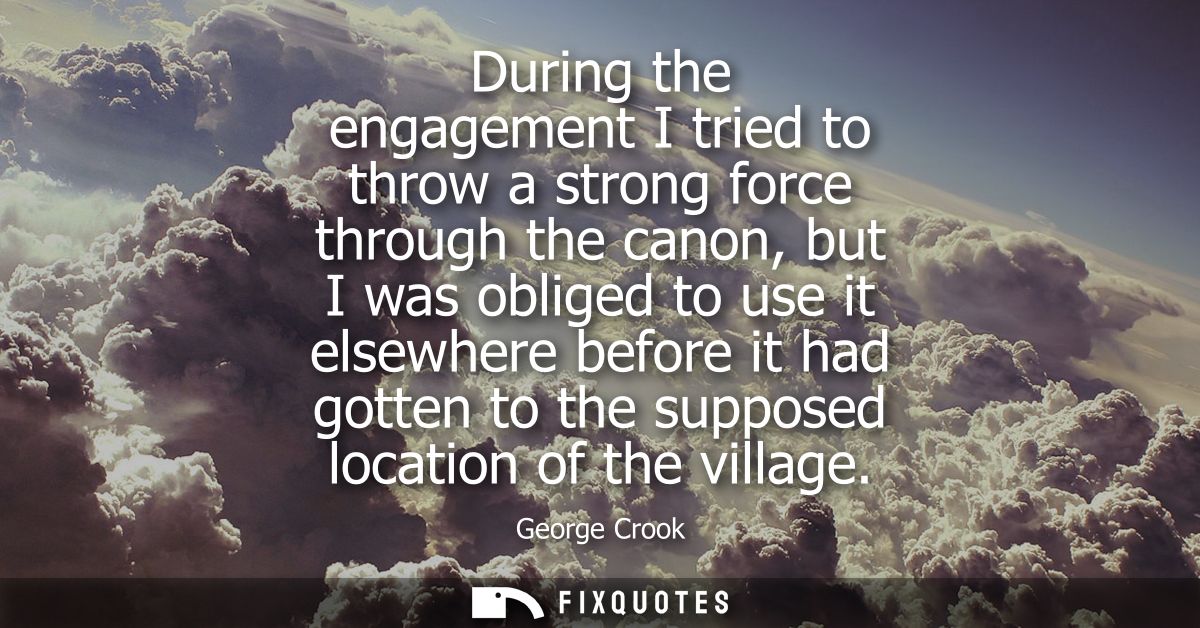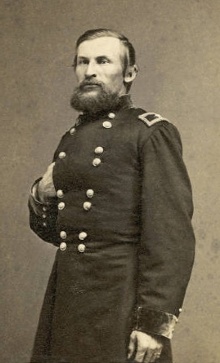"During the engagement I tried to throw a strong force through the canon, but I was obliged to use it elsewhere before it had gotten to the supposed location of the village"
About this Quote
George Crook describes the tension between intent and necessity during a fluid frontier engagement. He planned to push a strong detachment through a cañon, a narrow, controlling terrain feature, to strike a village, likely by surprise or to cut off retreat. The verbs matter: “throw” implies speed and violence of action; “strong force” signals a deliberate commitment of scarce combat power. Yet “obliged to use it elsewhere” conveys compulsion: events forced a reallocation before the detachment reached the village’s presumed position. The phrase “supposed location” betrays the uncertainty of reconnaissance typical of nineteenth-century campaigning. Intelligence was fragmentary, enemy settlements were mobile, and distances through broken country magnified delays.
A force threading a canyon cannot pivot quickly; it is committed to a single avenue of approach and easily cut off from the rest of the column. When new threats emerged, perhaps a counterattack on the flank, a threat to the pack train, or evidence the enemy had shifted, Crook prioritized immediate risk over the planned envelopment. The result was a missed opportunity and a candid admission of friction: time, terrain, and incomplete information unraveled a neat design.
The statement also functions as justification to superiors or critics: the commander did not abandon aggressiveness; he adapted under constraint. It reflects a leadership ethic that values flexibility and economy of force over rigid adherence to plan. More broadly, it illustrates the operational calculus of the Indian Wars: maneuver through restrictive terrain, long communications, and fast, dispersed opponents demanded constant triage. Even a sound plan could become irrelevant before the detachment arrived, and commanders had to decide whether to double down on the original stroke or preserve the army’s cohesion. The line captures the gap between map and ground, where the clock on emerging dangers runs faster than the feet of a marching column. Crook’s choice emphasizes pragmatism: reallocating power at the decisive point, even at the cost of a hoped-for coup.
About the Author

